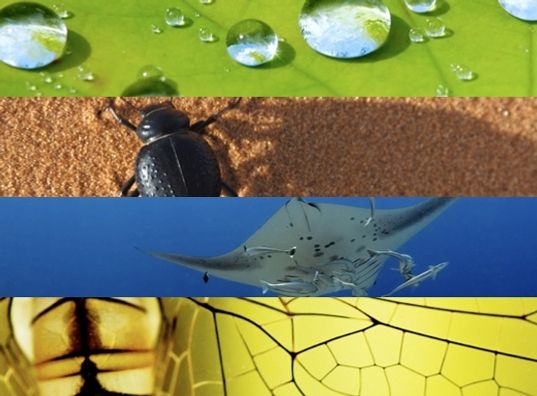Biomimicry: Unlocking Nature’s Design Wonders
Read the entire article at World Environment Day.
In 2015, engineering student Jorge Zapote and his team from the University of Calgary decided to take on a problem that affects millions of poor, rural families around the world – and one whose solution could be key to remedying climate change. They wanted to find a low-cost way of keeping fruit and vegetables cool and fresh in low-resource settings without using electricity.
In his recently released book Drawdown: The Most Comprehensive Plan Ever Proposed to Reverse Global Warming, Paul Hawken concludes that the most important way to reduce greenhouse gases by 2050 is to phase out chemical refrigerants – and that cutting food waste ranks third among solutions. So creating an electricity and chemical-free refrigerator that prevented food waste would be a big step towards reversing global warming. But how even to begin to design a device that would help solve such pervasive, complicated issues?
Using biomimicry – an innovation approach that looks to living systems for clues on how to create sustainable, life-friendly designs – Zapote and his team created WindChill, a low-cost, electricity-free way to store fresh food. By studying and emulating how coral, kangaroos, elephants, and meerkats regulate temperature, they were able to develop a device that uses a combination of outside air, water, and an evaporation chamber to keep food cool. The design won first place in the 2015 student Biomimicry Global Design Challenge, and they are now working to bring their design to market in the Biomimicry Accelerator, a program developed by the Biomimicry Institute and sponsored by the Ray C. Anderson Foundation.
This is just one of thousands of examples of how innovators are unlocking clues from the living world to rethink how we design products, materials, and systems. Biomimicry provides a new lens that clarifies a path toward sustainable – maybe even radically sustainable – design. Instead of toxic dyes, biomimicry shows us how to create colour using nanostructures, just like the wings of the beautiful morpho butterflies or the hair of the blue tarantula. In place of fertilizer and chemicals, biomimicry points to mimicking how some plants in harsh, mountainous regions pave the way for new species to grow. And living organisms can also inspire entrepreneurs to come up with more efficient, lower-cost technologies, such as NBD Nano’s surface coating solutions inspired by water-repelling and water-attracting structures on the body of the Namib Desert Beetle. There is no end to what we can come up with if we learn how to tap into nature’s treasure trove of answers.
We’re just beginning a colossal shift from technologies and systems that ransack the dwindling supply of natural resources to ones that tread lightly on – or even restore – our shared planet. Nature contains millions of time-tested examples of technologies that run on renewable energy, use life-friendly materials, are locally attuned, and reward cooperation. The good news is that all the tools and inspiration we need are right outside our doors, if we can learn how to look for them.



